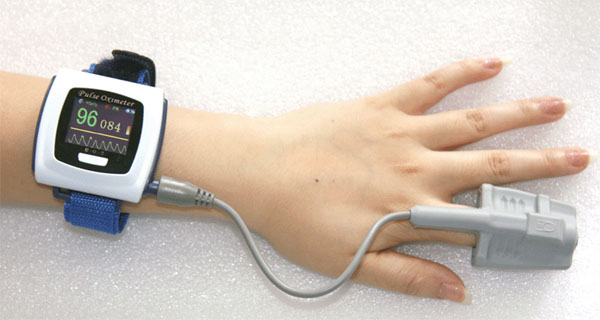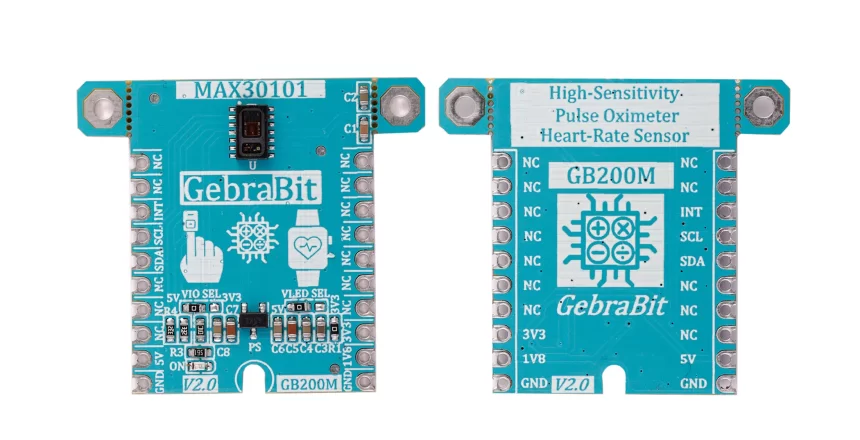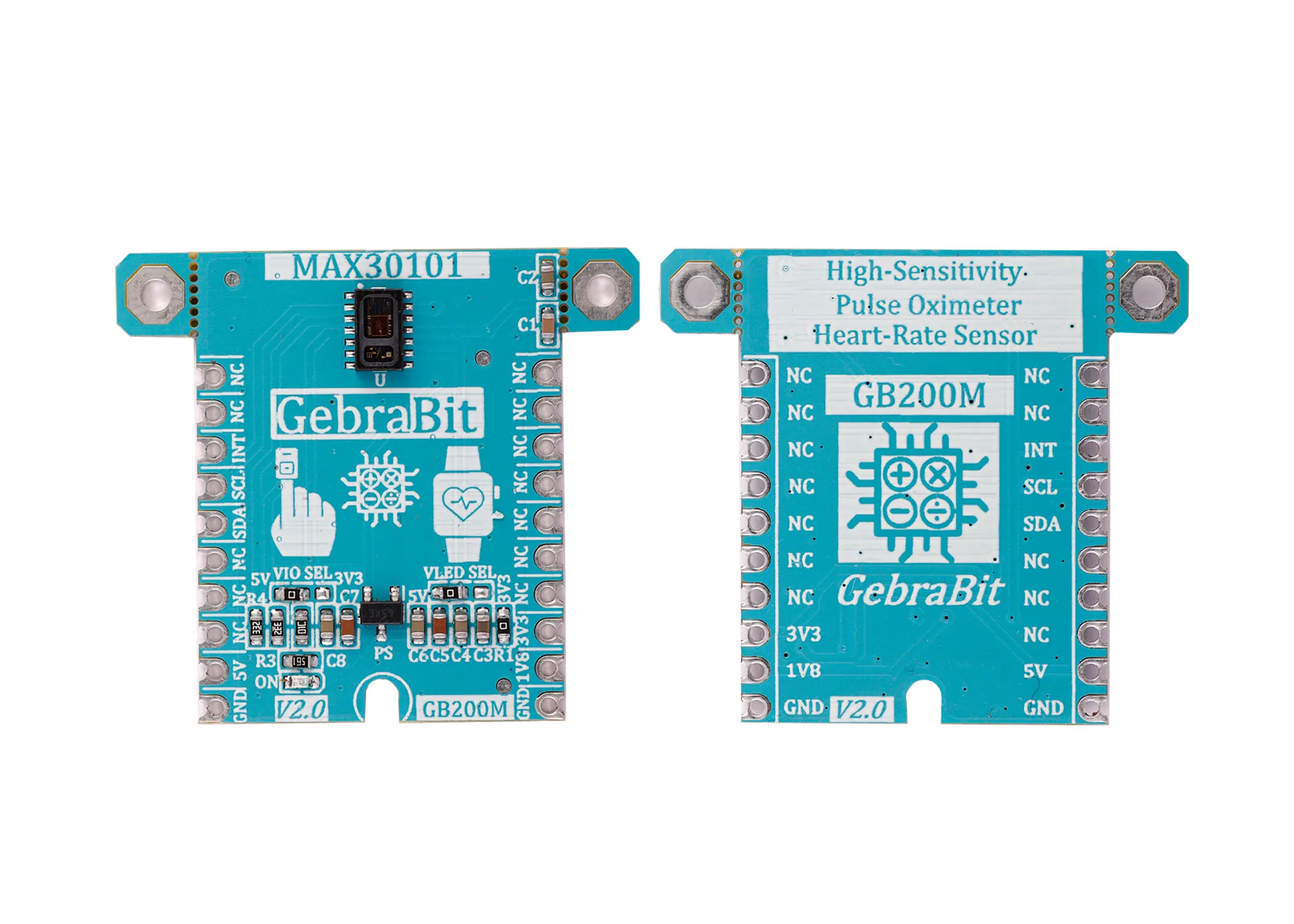Biomedical Sensors
Biomedical sensors are special electronic devices that can transduce biomedical signals into easily measurable electric signals. Biomedical sensors are the key component in various medical diagnostic instruments and equipment.
Biomedical sensors have been widely applied in medical image analysis and diagnostics, portable and clinical diagnostics, and laboratory analytical applications.
Biomedical sensors are usually classified according to the quantity to be measured and are typically categorized as physical, electrical, or chemical, depending on their specific applications.

Pulse Oximeter Sensors
pulse oximeter sensors are small non-invasive devices that are attached to a person’s finger, or other appendages, to measure blood oxygen saturation (SpO2) and heart rate. These sensors determine how efficiently oxygen is being carried through the body by the bloodstream. There are different variations of pulse oximeter sensors that attach to fingers, ears or toes and, in the case of veterinary applications, on the tongue.

An overview of the MAX30101 sensor

The MAX30101 is an integrated pulse oximetry and heartrate monitor module. It includes internal LEDs, photodetectors, optical elements, and low-noise electronics with ambient light rejection.
The MAX30101 operates on a single “1.8V” power supply and a separate “5.0V” power supply for the internal LEDs. Communication is through a standard I2C-compatible interface.
Specification
Applications
- Output Type: Digital – I2C
- Wavelength Range: IR: 870nm to 900nm RED: 650nm to 670 Green: 530nm to 545nm
- Wavelength Peak: IR: 880nm RED: 660nm Green: 537nm
- ADC Resolution: 18 Bit
- Number of LEDs: 3
- Number of PDs: 1
For more specifications, please refer to datasheet
- Wearable Devices
- Fitness Assistant Devices
- Smartphones
- Tablets
GebraBit MAX30101 module Key Features
- User-selectable module logic level voltage
- User-selectable MAX30101 LED Anode Supply Voltage
- 1V8 Voltage Regulator
- 1V8 Output Voltage
- On Board, ON/OFF LED indicator
- Pin Compatible with GEBRABUS
- I2C protocol to get data and configure the sensor
- It can be used as a daughter board of GEBRABIT MCU Modules
- Featuring Castellated pad (Assembled as SMD Part)
- Separatable screw parts to reduce the size of the board
- Package: GebraBit small (36.29mm x 32.72mm)
GebraBit MAX30101 module

GebraBit MAX30101 is integrated pulse oximetry and a heartrate monitor module.
GebraBit MAX30101 module, due to an integrated “1V8” regulator, turns the MAX30101 sensor ON.
Users can interface with GebraBit MAX30101 by I2C protocol to get data and configure the sensor.
The user needs a starter circuit and driver for hardware development and of course software development of the sensor. For the convenience of users, this work has been done by implementing the MAX30101 sensor circuit and providing access to the communication and power supply signal pins by GebraBit team.

It is enough to put the GebraBit MAX30101 module in the BreadBoard, then by applying the proper voltage, connect the GebraBit MAX30101 module with any of the Arduino, Raspberry Pi, Discovery boards, and especially we recommend using GebraBit microcontroller development modules to develop the sensor and receiving data.

The reason for our recommendation when setting up the GebraBit MAX30101 module with GebraBit microcontroller development modules (such as GebraBit STM32F303 or GebraBit ATMEGA32), is the presence of an internal 3V3 regulator on these modules and the compatibility of the pin order of all GebraBit modules together (GEBRABUS standard). It’s enough to put the GebraBit MAX30101 module in the corresponding socket as shown in the above picture and develop the desired sensor module without the need for wiring.
Introduction of module sections

MAX30101 sensor
It’s the main IC of the following module, which is placed in the center of the module and is in charge of providing ECG waveforms and pulse oximeter.

VIO SEL Jumper
According to the state of 0R resistance of this jumper the logic level voltage of module can be selected between “5V” or “3V3”.

LED voltage selector jumper (VLED SEL)
According to the state of 0R resistance of “VLED SEL” jumper, MAX30101 LED Anode Supply Voltage can be selected between “5V” and “3V3”.

“1.8V” XC6206P182MRG regulator
GebraBit MAX30101 module, due to this integrated 1V8 regulator, turns the MAX30101 sensor ON. The regulator output is accessible on the “1V8” pin.

power supply LED
By applying voltage to the module via the corresponding pin, this LED will be lit.

GebraBit MAX30101 Module pins

Supply pins
- 1V8 and 3V3 and 5V: These pins can provide the main power supply of the sensor and LED and the logic level voltage of the module,according to the “VIO SEL” and “VLED SEL” jumpers state.
- GND: This is the common ground pin for power the module.

I2C pins
- SDA: This pin is the I2C communication data pin, which is connected to the corresponding data pin in the microcontroller (processor). According to the state of the “VIOSEL” jumper, you can use the logic level with a voltage of “5V” or 3V3.This pin is pulled up with a resistor.
- SCL: This pin is the I2C communication clock pin, which is connected to the corresponding clock pin in the microcontroller (processor). Depending on the state of the “VIOSEL” jumper, you can use the logic level with a voltage of “5V” or “3V3”. This pin is pulled up with a resistor.

Other pins
- INT: Interrupt Output pin. “INT” pin is an active low status output. You can Connect this pin to an external voltage with a pullup resistor.

Connect to the processor

I2C connection with GebraBit STM32F303
For I2c connection of GebraBit MAX30101 and GebraBit STM32F303 microcontroller module, after defining “SDA” and “SCL” on pins PB9 and PB8 (for convenience in STMCUBEMX), follow the below steps:
- Connect the “3V3” pin of the MAX30101module to the “3V3” output pin of the microcontroller module. (red wire)
- Connect the “GND” pin of the MAX30101module to the “GND” pin of the microcontroller module (black wire).
- Connect the “SCL” pin of the MAX30101 module to the PB8 pin of the microcontroller (SCL) module (blue wire).
- Connect the “SDA” pin of the MAX30101 module to the PB9 pin of the microcontroller (SDA) module. (yellow wire)
You can see how to connect the above mentioned steps in this picture:

Note: Considering that the PA14 pin of the GebraBit STM32F303 microcontroller module is used to program the microcontroller, I2C setting on the PA14 and PA15 pins is impossible in this version, so in this version for I2C connection with the GebraBit STM32F303 microcontroller module, GebraBit MAX30101 module cannot be placed on it as Pin to Pin.
I2C connection with GebraBit ATMEGA32A
Considering that the I2C pins of the ATMEGA32A microcontroller are based on the GEBRABUS standard and correspond to the I2C pins of other GEBRABIT modules, the GebraBit MAX30101 module can be placed pin to pin on the GebraBit ATMEGA32A module and communicate with the GebraBit MAX30101 module via I2C by changing the state of the protocol selection jumper resistors:

Note: If you are using GebraBit microcontroller modules, note that the power selector jumpers of the GebraBit MAX30101 are set to “3V3” so that you can easily power-on the GebraBit MAX30101 module by getting the “3V3” voltage from the microcontroller module.
I2C Connection with ARDUINO UNO
Follow the below steps to connect module GebraBit MAX30101 to ARDUINO UNO via I2C:
- Connect the “3V3” pin of the MAX30101 module to the “3V3” output pin of the ARDUINO UNO board. (red wire)
- Connect the “GND” pin of the MAX30101 module to the “GND” pin of the ARDUINO UNO board. (black wire)
- Connect the “SCL” pin of the MAX30101 module to the A5 pin of the ARDUINO UNO board (SCL). (blue wire)
- Connect the “SDA” pin of the MAX30101 module to the A4 pin of the ARDUINO UNO board (SDA). (orange wire)
You can see how to connect the above mentioned steps in this picture:




